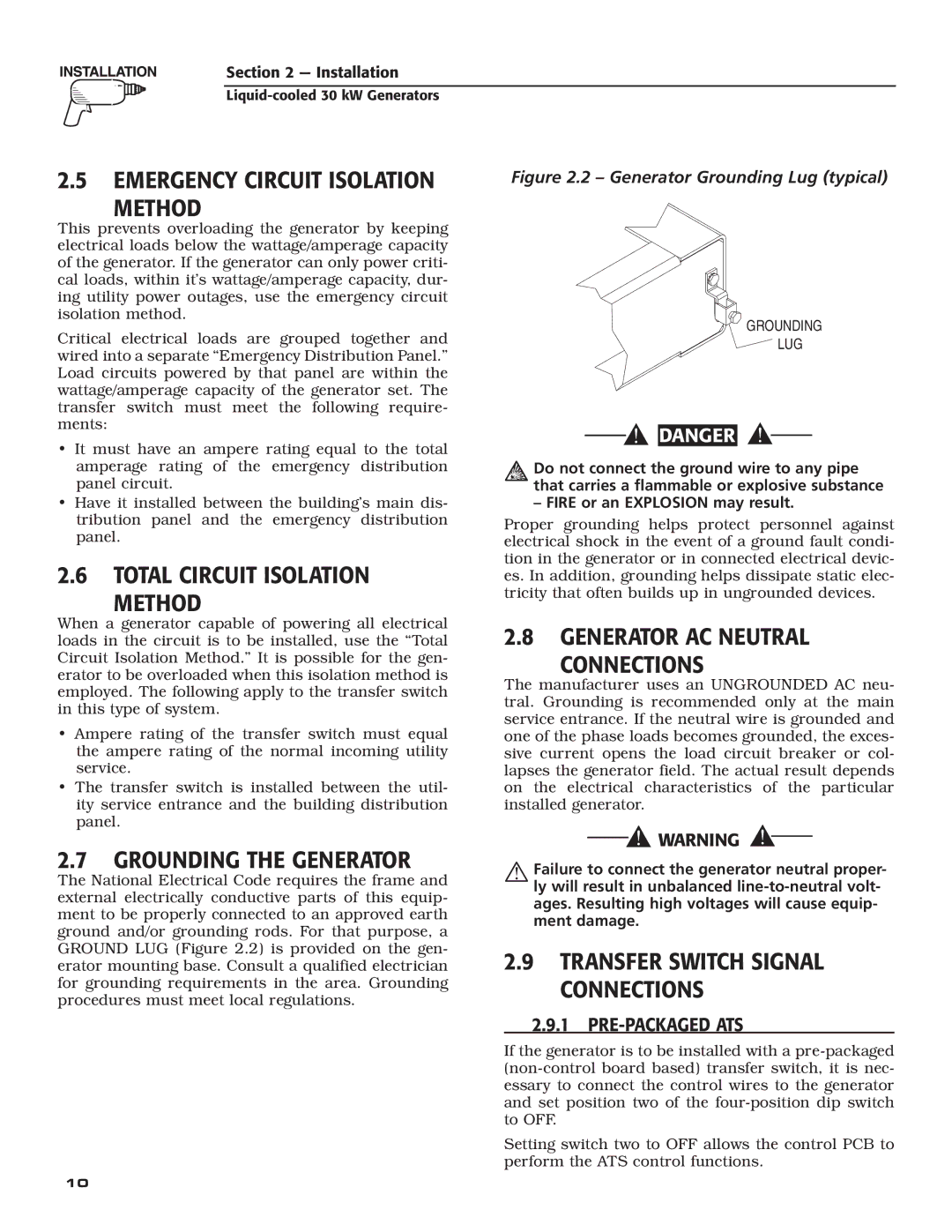
Section 2 — Installation
2.5EMERGENCY CIRCUIT ISOLATION
METHOD
This prevents overloading the generator by keeping electrical loads below the wattage/amperage capacity of the generator. If the generator can only power criti- cal loads, within it’s wattage/amperage capacity, dur- ing utility power outages, use the emergency circuit isolation method.
Critical electrical loads are grouped together and wired into a separate “Emergency Distribution Panel.” Load circuits powered by that panel are within the wattage/amperage capacity of the generator set. The transfer switch must meet the following require- ments:
•It must have an ampere rating equal to the total amperage rating of the emergency distribution panel circuit.
•Have it installed between the building’s main dis- tribution panel and the emergency distribution panel.
2.6TOTAL CIRCUIT ISOLATION
METHOD
When a generator capable of powering all electrical loads in the circuit is to be installed, use the “Total Circuit Isolation Method.” It is possible for the gen- erator to be overloaded when this isolation method is employed. The following apply to the transfer switch in this type of system.
•Ampere rating of the transfer switch must equal the ampere rating of the normal incoming utility service.
•The transfer switch is installed between the util- ity service entrance and the building distribution panel.
2.7GROUNDING THE GENERATOR
The National Electrical Code requires the frame and external electrically conductive parts of this equip- ment to be properly connected to an approved earth ground and/or grounding rods. For that purpose, a GROUND LUG (Figure 2.2) is provided on the gen- erator mounting base. Consult a qualified electrician for grounding requirements in the area. Grounding procedures must meet local regulations.
Figure 2.2 – Generator Grounding Lug (typical)
![]() GROUNDING
GROUNDING
![]() LUG
LUG
![]()
![]() DANGER
DANGER
Do not connect the ground wire to any pipe that carries a flammable or explosive substance
– FIRE or an EXPLOSION may result.
Proper grounding helps protect personnel against electrical shock in the event of a ground fault condi- tion in the generator or in connected electrical devic- es. In addition, grounding helps dissipate static elec- tricity that often builds up in ungrounded devices.
2.8GENERATOR AC NEUTRAL
CONNECTIONS
The manufacturer uses an UNGROUNDED AC neu- tral. Grounding is recommended only at the main service entrance. If the neutral wire is grounded and one of the phase loads becomes grounded, the exces- sive current opens the load circuit breaker or col- lapses the generator field. The actual result depends on the electrical characteristics of the particular installed generator.
Failure to connect the generator neutral proper- ly will result in unbalanced
2.9TRANSFER SWITCH SIGNAL CONNECTIONS
2.9.1 PRE-PACKAGED ATS
If the generator is to be installed with a
Setting switch two to OFF allows the control PCB to perform the ATS control functions.
10
